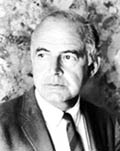

SAMUEL BARBER
9thMarch 1910 --- 23rdJanuary 1981
Copyright 1994-1998 Encyclopaedia Britannica
If you require any more info on Samuel Barber, please visit Walter Simmons excellent site. "click here".
By Steven Ritchie
And now for the Music

Many thanks to Philip Decloux for the great music below, Email (declouxp @ hotmail.com)
(3093)"Essay for Orchestra No.1". Sequenced by Philip Decloux. (3094)"Essay for Orchestra No.2". Sequenced by Philip Decloux. "Knoxville: Summer of 1915". Sequenced by David Siu.
Thanks to Bjorn Lengton for the music below. Email(mb.Lengton.Athelas@12move.nl)
"Adagio for Strings, string quartet in B minor, opus 11". Sequenced by Bjorn Lengton. (1814)"Violin Concerto 1st Mov". Sequenced by David Siu
444)"Violin Concerto 3rd Mov". Sequenced by David Siu
(1813)"Reincarnations". Sequenced by Ted Clark
(1809)"Excursions No.1". Sequenced by E.P.Grant
(1810)"Excursions No.2". Sequenced by E.P.Grant
(1811)"Excursions No.3". Sequenced by E.P.Grant
(1812)"Excursions No.4". Sequenced by E.P.Grant New (3652)"Sure on this shining night, Opus.3, No.3". Sequencer Unknown.

If you done any Classical pieces of say for example, Delius, mozart, and so on etc,
please email them to the classical music site with details to
"classical (@) ntlworld.com" (written this way to stop spammers)
just remove spaces and brackets for email address), thank you.

Visitors to this page --

Back to Classical Midi Main Menu click "HERE"